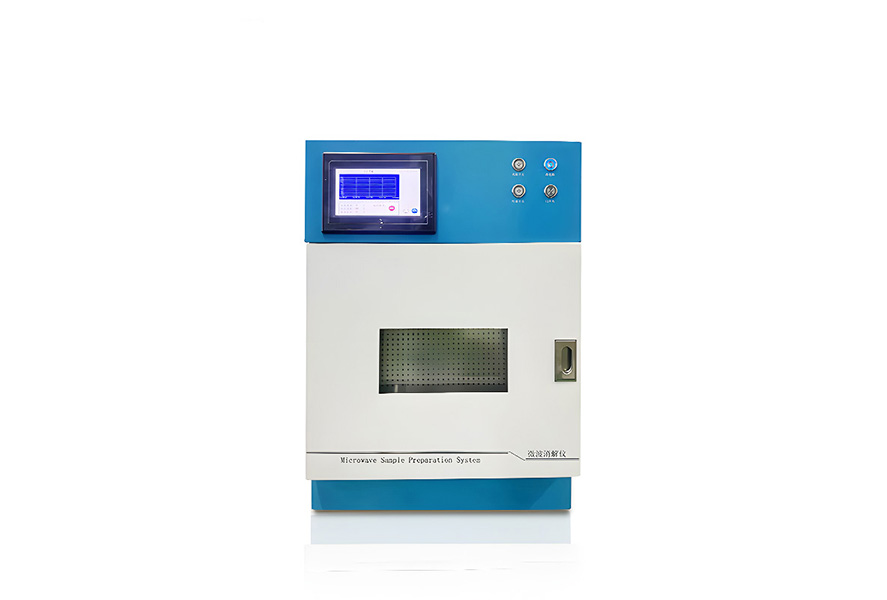
A microwave digestion instrument is a device that uses microwave energy to rapidly digest samples. It reacts the sample with an acidic solvent at high temperature and high pressure to decompose the organic and inorganic substances in the sample, providing a homogeneous solution for subsequent analysis. The following is a detailed explanation of the working principle of the microwave digestion instrument:
1、 Principle of Microwave Heating
The generation of microwave energy:
The core component of a microwave digestion instrument is a microwave generator (usually a magnetron), which generates microwave radiation with a frequency of 2450 MHz.
2. Microwave is an electromagnetic wave with penetrability that can quickly heat samples and reaction media.
The interaction between microwaves and matter:
1. Microwave energy is absorbed by polar molecules (such as water molecules and acid molecules) in the sample and solvent, causing molecular rotation and vibration.
2. The movement of these molecules generates frictional heat, which rapidly heats up the sample and solvent, achieving the purpose of dissolving the sample.
2、 High temperature and high pressure environment
Sealed digestion tank:
1. The sample and acid solvent are placed in a closed digestion tank, which is usually made of corrosion-resistant materials such as polytetrafluoroethylene (PTFE) or quartz.
2. A sealed environment can prevent the volatilization of acidic solvents and contamination of samples, while ensuring that the reaction takes place under high temperature and pressure.
Temperature and pressure control:
1. The microwave digestion instrument is equipped with temperature and pressure sensors to monitor the temperature and pressure of the reaction in real time.
2. The control system adjusts the microwave power according to the set parameters to ensure stable reaction conditions.
3、 Chemical reaction process
Reaction between sample and acidic solvent:
Under the action of microwave heating, the sample reacts rapidly with acidic solvents such as nitric acid, hydrochloric acid, hydrofluoric acid, etc.
2. The high temperature and high pressure environment accelerates the rate of chemical reactions, which can decompose organic and inorganic substances in the sample in a relatively short period of time.
Generate homogeneous solution:
After the reaction is complete, the sample is decomposed into a homogeneous solution, usually a colorless or pale yellow liquid.
2. These solutions can be used for subsequent analysis, such as atomic absorption spectroscopy (AAS), inductively coupled plasma mass spectrometry (ICP-MS), etc.
4、 Advantages and characteristics
Quick:
Compared to traditional digestion methods, microwave digestion can complete sample digestion in minutes to tens of minutes, greatly improving experimental efficiency.
Uniform heating:
1. Microwaves have good penetration and uniformity, which can ensure uniform heating of samples and avoid problems such as local overheating or incomplete digestion.
High temperature and high pressure:
1. The sealed digestion tank provides a high-temperature and high-pressure environment, which can digest difficult to dissolve samples and improve digestion efficiency.
Protection:
1. The closed system prevents the volatilization and leakage of acidic solvents, reducing the harm to the environment and laboratory personnel.
summary
The microwave digestion instrument uses rapid heating of microwave energy, the creation of a sealed high-temperature and high-pressure environment, and chemical reactions to decompose samples in a short period of time, providing a homogeneous solution for subsequent analysis. Its fast and other characteristics make it widely used in modern analytical laboratories.


